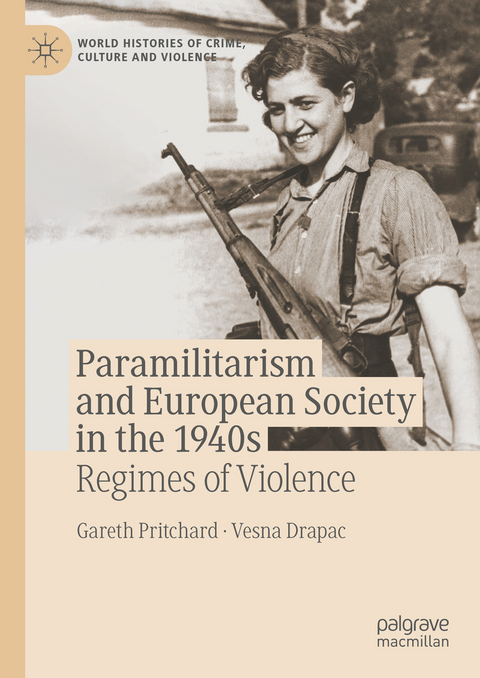
Paramilitarism and European Society in the 1940s
Springer International Publishing (Verlag)
978-3-031-74970-4 (ISBN)
- Noch nicht erschienen - erscheint am 07.01.2025
- Versandkostenfrei
- Auch auf Rechnung
- Artikel merken
This book explores the social roots, character, and consequences of paramilitary violence in Europe in the 1940s. Paramilitarism had an impact on the lives of millions of Europeans, yet knowledge about this important topic is partial and fragmented.
The general perception of European paramilitary violence in the 1940s derives almost entirely from the resistance/collaboration paradigm. This dichotomous analytical framework makes a clear distinction between politically motivated violence and social violence, such as sexual, criminal, and structural violence. By contrast, in this book, Gareth Pritchard and Vesna Drapac recognise the mutual dependence of all kinds of violence. Their interpretative model, the Regimes of Violence paradigm, which takes account of the changing relationship between state, society, and organised violence, allows us to observe paramilitarism in the round. The Regimes of Violence framework reveals the interconnectedness of paramilitarism with other forms of violence during this period of unprecedented brutality.
Today, paramilitary violence is a global phenomenon. It has resulted in the undermining of the rule of law and the erosion of civil society in many different countries on different continents, while at the same time traumatising the countless numbers of innocent people who are caught in its crossfire. With their compelling and timely study, Pritchard and Drapac provide an historical context and present a novel approach for understanding why paramilitarism shows no sign of abating.
Gareth Pritchard is Senior Lecturer at the University of Adelaide, Australia. Vesna Drapac is Associate Professor at the University of Adelaide, Australia.
1. Introduction.- Part I. Principles and People.- 2. How Can We Conceptualise Paramilitary Violence in 1940s Europe.- 3. Who Were the Paramilitaries?.- Part II. Regimes of Violence.- 4. What Caused the Expansion and Escalation of Paramilitarisation?.- 5. How Did Regimes of Violence Shape the Character and Activities of Paramilitaries?.- 6. How Did Paramilitarism Transform Social Relations?.- 7. How and Why Did Paramilitarism End?.- 8. Conclusion: What Have We Learned and Why Does It Matter?
| Erscheint lt. Verlag | 7.1.2025 |
|---|---|
| Reihe/Serie | World Histories of Crime, Culture and Violence |
| Zusatzinfo | Approx. 225 p. |
| Verlagsort | Cham |
| Sprache | englisch |
| Maße | 148 x 210 mm |
| Themenwelt | Geschichte ► Allgemeine Geschichte ► 1918 bis 1945 |
| Geisteswissenschaften ► Geschichte ► Regional- / Ländergeschichte | |
| Geschichte ► Teilgebiete der Geschichte ► Militärgeschichte | |
| Schlagworte | Collaboration • memory wars • paramilitarisation • Political violence • resistance • Sexual Violence • Social Violence |
| ISBN-10 | 3-031-74970-7 / 3031749707 |
| ISBN-13 | 978-3-031-74970-4 / 9783031749704 |
| Zustand | Neuware |
| Haben Sie eine Frage zum Produkt? |
aus dem Bereich


